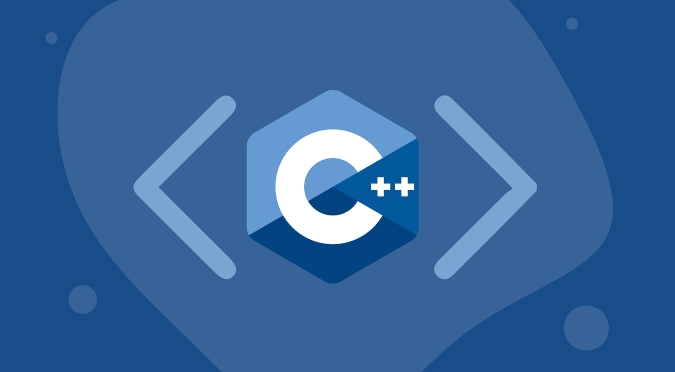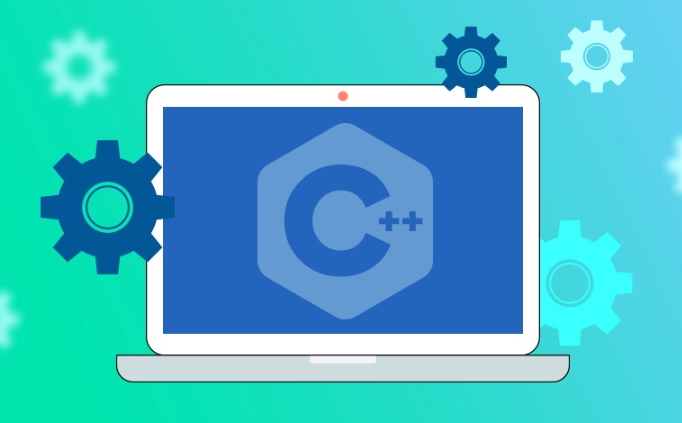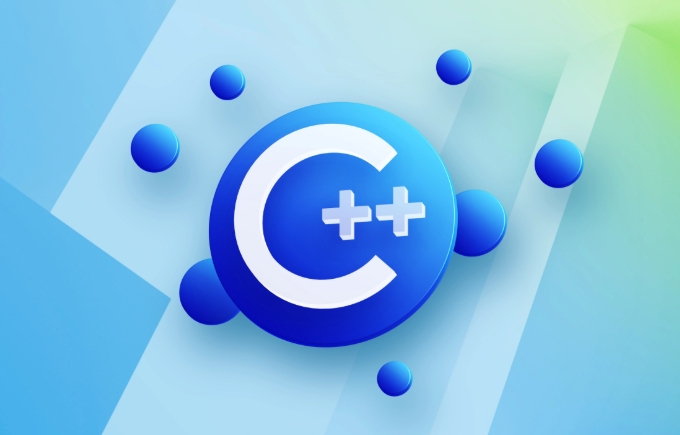The most commonly used design patterns in C include singleton mode, factory mode, observer mode, and policy mode. Singleton mode ensures that a class has only one instance and provides global access points, which is often used in scenarios such as configuration managers; factory mode encapsulates the object creation process, so that the caller does not need to know the specific class name, which is suitable for situations where the object creation logic is complex or changeable; observer mode implements a one-to-many dependency notification mechanism, which is widely used in UI updates or event listening systems; policy mode allows runtime switching algorithms or behaviors, and is suitable for scenarios such as payment systems that require dynamic changes in processing methods. These modes help developers build clearer and easier to maintain code structures by decoupling, hiding implementation details, and improving scalability.

The design pattern in C is actually not that mysterious. It is just some "routines" summarized in actual development to solve common code structure problems. If you have written medium and large projects, you will find that these patterns can help you organize your code more clearly and easily maintain.

The following design patterns are most commonly used and are particularly practical for C developers:
Singleton Pattern
The purpose of this pattern is to ensure that a class has only one instance and provide a global access point. For example, if you have a configuration manager in your project, you definitely don't want multiple instances to exist at the same time, which will cause data confusion.

Key points of implementation:
- Set the constructor to private
- Provide static method to obtain instances
- Usually use lazy loading to create objects
class ConfigManager {
private:
static ConfigManager* instance;
ConfigManager() {}
public:
static ConfigManager* getInstance() {
if (!instance) {
instance = new ConfigManager();
}
return instance;
}
};Note: Thread safety is a place where problems are prone to problems. In multi-threaded environments, locking or local static variables are required (supported after C 11).

Factory Pattern
Factory pattern is used to decouple object creation and use. Simply put, it is to encapsulate the new process. The caller does not need to know the specific class name, but just needs to tell the factory what type I want.
Applicable scenarios:
- Object creation logic is complex
- Different subclasses need to be returned according to different conditions
- Want to hide specific implementation classes
For example, you may have a shape factory that returns objects such as circles, squares, etc. according to the input parameters:
enum ShapeType { CIRCLE, SQUARE };
class Shape {
public:
virtual void draw() = 0;
};
class Circle : public Shape {
public:
void draw() override { cout << "Drawing circle" << endl; }
};
class Square : public Shape {
public:
void draw() override { cout << "Drawing square" << endl; }
};
class ShapeFactory {
public:
Shape* createShape(ShapeType type) {
switch (type) {
case CIRCLE: return new Circle();
case SQUARE: return new Square();
default: return nullptr;
}
}
};In this way, the client does not need to directly new specific classes, and it is also convenient to change the implementation.
Observer Pattern
Observer mode is used for one-to-many dependency notification mechanisms. For example, UI updates and event listening systems, this pattern is very common.
Core idea:
- Maintain a list of observers by observers
- Notify all observers when the state changes
- Observers handle updates separately
For example, you wrote a weather monitoring system, the sensor is the observer, and the UI is the observer. Once the sensor value changes, all UIs are notified to refresh.
The implementation is usually to define the interface, the observer registers to the topic, and then the topic triggers the update method when appropriate.
Strategy Pattern
The policy pattern allows you to change algorithms or behaviors at runtime. Suitable for scenarios where processing methods need to be switched according to different situations.
For example, in the payment system, you can have different payment strategies such as Alipay, WeChat, UnionPay, etc., and call them uniformly through one interface.
advantage:
- Replace the algorithm without modifying the original code
- Avoid a lot of if-else or switch-case
- Strong scalability
You can define an abstract policy class, each specific policy implements the corresponding method, and then the context class holds the policy interface pointer and is dynamically bound when called.
Basically, there are only these most commonly used C design patterns. Each has its own applicable scenario, the key is to understand what problems they solve. Don't memorize it by rote. If you use it too much, you will naturally know when to use it.
The above is the detailed content of Design Patterns in C. For more information, please follow other related articles on the PHP Chinese website!

Hot AI Tools

Undress AI Tool
Undress images for free

Undresser.AI Undress
AI-powered app for creating realistic nude photos

AI Clothes Remover
Online AI tool for removing clothes from photos.

Clothoff.io
AI clothes remover

Video Face Swap
Swap faces in any video effortlessly with our completely free AI face swap tool!

Hot Article

Hot Tools

Notepad++7.3.1
Easy-to-use and free code editor

SublimeText3 Chinese version
Chinese version, very easy to use

Zend Studio 13.0.1
Powerful PHP integrated development environment

Dreamweaver CS6
Visual web development tools

SublimeText3 Mac version
God-level code editing software (SublimeText3)
 What is high-frequency virtual currency trading? The principles and technical implementation points of high-frequency trading
Jul 23, 2025 pm 11:57 PM
What is high-frequency virtual currency trading? The principles and technical implementation points of high-frequency trading
Jul 23, 2025 pm 11:57 PM
High-frequency trading is one of the most technologically-rich and capital-intensive areas in the virtual currency market. It is a competition about speed, algorithms and cutting-edge technology that ordinary market participants are hard to get involved. Understanding how it works will help us to have a deeper understanding of the complexity and specialization of the current digital asset market. For most people, it is more important to recognize and understand this phenomenon than to try it yourself.
 C vector get first element
Jul 25, 2025 am 12:35 AM
C vector get first element
Jul 25, 2025 am 12:35 AM
There are four common methods to obtain the first element of std::vector: 1. Use the front() method to ensure that the vector is not empty, has clear semantics and is recommended for daily use; 2. Use the subscript [0], and it also needs to be judged empty, with the performance comparable to front() but slightly weaker semantics; 3. Use *begin(), which is suitable for generic programming and STL algorithms; 4. Use at(0), without manually null judgment, but low performance, and throw exceptions when crossing the boundary, which is suitable for debugging or exception handling; the best practice is to call empty() first to check whether it is empty, and then use the front() method to obtain the first element to avoid undefined behavior.
 How to develop AI-based text summary with PHP Quick Refining Technology
Jul 25, 2025 pm 05:57 PM
How to develop AI-based text summary with PHP Quick Refining Technology
Jul 25, 2025 pm 05:57 PM
The core of PHP's development of AI text summary is to call external AI service APIs (such as OpenAI, HuggingFace) as a coordinator to realize text preprocessing, API requests, response analysis and result display; 2. The limitation is that the computing performance is weak and the AI ecosystem is weak. The response strategy is to leverage APIs, service decoupling and asynchronous processing; 3. Model selection needs to weigh summary quality, cost, delay, concurrency, data privacy, and abstract models such as GPT or BART/T5 are recommended; 4. Performance optimization includes cache, asynchronous queues, batch processing and nearby area selection. Error processing needs to cover current limit retry, network timeout, key security, input verification and logging to ensure the stable and efficient operation of the system.
 C bit manipulation example
Jul 25, 2025 am 02:33 AM
C bit manipulation example
Jul 25, 2025 am 02:33 AM
Bit operation can efficiently implement the underlying operation of integers, 1. Check whether the i-th bit is 1: Use n&(1
 C function example
Jul 27, 2025 am 01:21 AM
C function example
Jul 27, 2025 am 01:21 AM
Functions are the basic unit of organizing code in C, used to realize code reuse and modularization; 1. Functions are created through declarations and definitions, such as intadd(inta,intb) returns the sum of the two numbers; 2. Pass parameters when calling the function, and return the result of the corresponding type after the function is executed; 3. The function without return value uses void as the return type, such as voidgreet(stringname) for outputting greeting information; 4. Using functions can improve code readability, avoid duplication and facilitate maintenance, which is the basic concept of C programming.
 Understanding the C ABI
Jul 24, 2025 am 01:23 AM
Understanding the C ABI
Jul 24, 2025 am 01:23 AM
C ABI is the underlying rule that the compiler follows when generating binary code, which determines mechanisms such as function calls, object layout, name adaptation, etc. 1. It ensures that different compilation units interact correctly, 2. Different compilers or versions may adopt different ABIs, affecting dynamic library links, STL transfers, virtual function calls, etc. 3. Cross-platform development, long-term system maintenance, third-party library use and other scenarios need to pay special attention to ABI consistency, 4. ABI can be controlled through macro definitions and compilation options, and use tools to view the symbol table to judge consistency.
 C std::is_same example
Jul 24, 2025 am 03:22 AM
C std::is_same example
Jul 24, 2025 am 03:22 AM
std::is_same is used to determine whether the two types are exactly the same at compile time and return a bool value. 1. In the basic usage, std::is_same::value is true when T and U are exactly the same, otherwise it is false. Different modifiers such as const, reference, pointer, etc. will cause false; 2. You can remove the type modification with std::remove_const, std::remove_reference and other types, and then compare it to achieve more flexible type judgment; 3. It is often used in template metaprogramming in practical applications, such as conditional compilation with ifconstexpr, and perform different logic according to different types; 4.
 C Standard Library Explained
Jul 25, 2025 am 02:11 AM
C Standard Library Explained
Jul 25, 2025 am 02:11 AM
The C standard library helps developers improve code quality by providing efficient tools. 1. STL containers should be selected according to the scene, such as vector suitable for continuous storage, list suitable for frequent insertion and deletion, and unordered_map is suitable for fast search; 2. Standard library algorithms such as sort, find, and transform can improve efficiency and reduce errors; 3. Intelligent pointers unique_ptr and shared_ptr effectively manage memory to avoid leakage; 4. Other tools such as optional, variant, and function enhance code security and expressiveness. Mastering these core functions can significantly optimize development efficiency and code quality.






